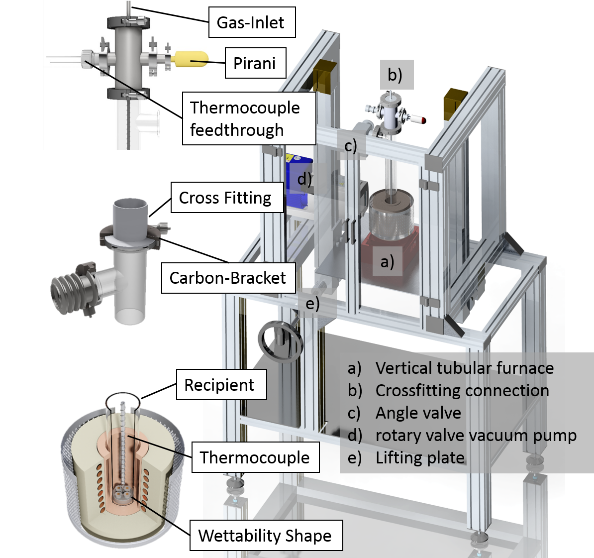Investigation and use of thermo physicochemical mechanism of surface deoxidation using silane-doped argon in low vacuum brazing processes

| Year: | 2018 |
| Date: | 30-07-19 |
| Funding: | DFG |
| Duration: | 01.12.2014-30.07.2019 |
The objective of the proposed project is the investigation and clarification of deoxidation mechanism of natural passivated steel surfaces in vacuum brazing processes, in order to understand and then optimize vacuum brazing of stainless steels.
Firstly, analytical methods will be developed, which allow a surface-sensitive “in situ” analysis of metal surfaces during annealing of metal specimens using vacuum-furnace-like process conditions. The methods must tolerate variations of the heating conditions as well as a variation of the gas atmosphere concerning its composition and its pressure up to 1 mbar. Particularly the use of silane-doped Argon for realizing defined deoxidizing conditions is a major aspect of the investigations planned, since significant improvements for the brazing of stainless steels are expected from this gas mixture in a low vacuum process.
The “in situ” investigations will be confirmed by vacuum brazing tests using similar process conditions. A vacuum furnace, which is equipped with a gassing system that allows for defined silane-argon-compositions up to 1 mbar within the furnace recipient, is used for tempering and brazing steel specimens with appropriate braze metals. From an analysis of the brazed specimen a correlation between the “in situ” investigations of surface deoxidation and the wetting behavior of brazes on the steel surfaces as function of the performed process conditions will be worked out.
Furthermore the experimental data from „in situ“-measurements will be used to clarify the deoxidation mechanism and quantify the kinetics of the detected surface reactions. These data are the base for a physical model to be developed, which describes the thermodynamic and kinetic aspects of the observed surface reactions and shall allow for a prediction of optimal process conditions for vacuum brazing of particular difficult-to-braze stainless steels.




















